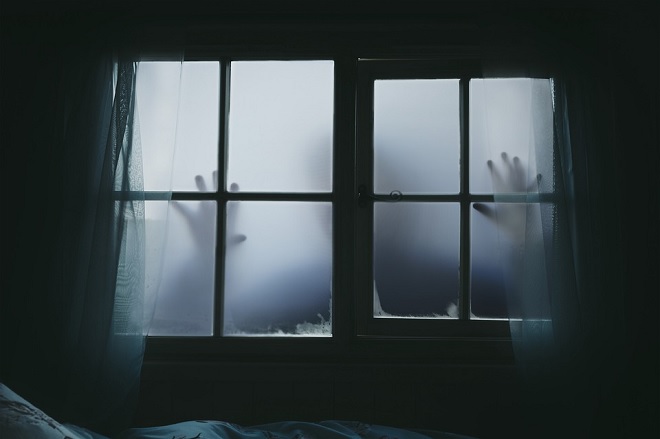
“Tradition is not the worship of ashes, but the preservation of fire.”

“The work of art is an intricate interplay between concealment and un-concealment, secrets and exposure, and invisibility and visibility.”
In his article, The Arts as an Area of Knowledge, Louis Cheng explores Martin Heidegger’s thoughts on art as a means to know the world around us. It’s a two-way street of mutual discovery, one beneficial to both the artist and the audience. As Flannery O’Connor famously put it, “I write because I don’t know what I think until I read what I say.”
Of course, step one is to get your audience’s attention. Withholding information triggers the imagination, and the reason this works is central to our nature. We’ve always been attracted to the interplay of the revealed and the hidden. Mystery fascinates us because it ignites the primal need to know what comes next — a basic survival skill. That’s why story tellers withhold certain details from readers, who must turn the next page to find out what happens next.
To quote from Flannery O’Connor again, “You have to make your vision apparent by shock — to the hard of hearing you shout, and for the almost blind you draw large and startling figures.”
Once your reader confronts those large and startling figures, they’re open to what you have to say. That’s when the real journey begins.
“I feel that if we were a Spock-like species — you know, if we came from the planet of Vulcan and we only did those things that made logical sense, I feel that we would not have prevailed. It is only by virtue of our capacity to allow our minds to freely roam the landscape of imaginative possibility that we are able to innovate in the ways that we have.”
Brian Greene, professor of physics and mathematics at Columbia University

“That which has been is what will be, That which is done is what will be done, And there is nothing new under the sun.” Ecclesiastes
We’ve all been there. We want to create something groundbreaking, something new and fresh. And we imagine that to do so we must start from scratch and create something never seen before. Forget genre! Forget tropes! Let’s make something truly original.
Problem is, it’s impossible to create something no one has ever seen before. Everyone gets their ideas from someone else. Stephen King learned from H.P. Lovecraft, who imitated Edgar Alan Poe, who got one of his best ideas (“The Raven”) from Charles Dickens. And so on. The work of every writer has a lineage, born out of a tradition. Step one in mastering the craft of writing, then, is to learn that tradition and make it your own.
What we call tradition is a set of conventions handed down — and embraced — because they work. As evolutionary psychologist Geoffrey Miller put it, “A ‘tradition’ is just an innovation that’s been peer-reviewed. One that replicates, generation after generation.”
The reason these conventions work for us is because they are based on who we are. Carl Jung observed recurring personality types that he referred to as archetypal figures, which include: mother, father, child, devil, god, wise old man, wise old woman, the trickster, and the hero. Jung rejected the blank slate theory of human psychological development, knowing that evolutionary pressures formed our bodies and personalities.
As beings with a long-established nature, we find ourselves confronting situations that are also long-established and recurring. Jung described these archetypal events as birth, death, separation from parents, initiation, marriage, and the union of opposites.
Underlying the superficial changes we experience is a timeless reality that repeatedly manifests itself in a set number of ways. That’s why there are only so many possible plots.
Joseph Campbell, who wrote “The Hero With A Thousand Faces,” used the term “monomyth” to describe the hero’s journey, a plot that appears all over the world. All cultures, he wrote, create their own traditions, including their own stories to express their experience with the unchanging reality behind human existence.
And that’s what we want to do. Tradition is not an obstacle to creativity, but a springboard. When we interpret our experience in the light of tradition, we reveal to our readers, and ourselves, the mystic union of the past and present. In the words of T. S. Eliot, we must uncover the “point of intersection of the timeless with time.” That endeavor, says Eliot, is “the occupation of the saint.”
The challenge, as Ezra Pound put it, is to “Make it new.” Somehow, we must honestly recognize, and then relate, our insights, our pain, our love, our hate, to the timeless truth of the human condition. That’s the vital component that keeps the tradition alive — us.
Check out the gorgeous nature images now online courtesy of the Biodiversity Heritage Library. This is part of an effort to raise awareness of the sad plight of wildlife. Wild animals now face a threat unparalleled in Earth’s history:
Are we truly in the midst of a human-caused sixth mass extinction, an era of “biological annihilation”? Many scientists and popular science writers say yes, using terms like “Holocene” or “Anthropocene” to describe what follows the Ordovician, Devonian, Permian, Triassic, and Cretaceous periods. Peter Brannen, author of extinction history The Ends of the Earth has found at least one scientist who thinks the concept is “junk.” But Brannen quotes some alarming statistics. Chilling, even. “Until very recently,” he writes, “all vertebrate life on the planet was wildlife. But astoundingly, today wildlife accounts for only 3 percent of earth’s land animals; human beings, our livestock, and our pets take up the remaining 97 percent of the biomass… almost half of the earth’s land has been converted into farmland.”
We need the wild. Maybe this project will make people appreciate it more.
E. O. Wilson is one of the most important and influential scientists of our age. His work on the deep foundations of human nature and behavior has inspired many in the arts and sciences – just to name one example, the fruitful new discipline called evolutionary psychology is impacting many areas, including marketing, politics, and education. His latest book, The Origins of Creativity, promises new insights into the creative process.
In the video linked above, Alan Alda interviews E. O. Wilson about the dynamics between the individual and society that inspire creativity:
Alan Alda: The campfire was the place that drew them. Maybe it was just the pleasure of looking at the flames, maybe it was to compete, maybe it was actually toasting marshmallows… but they told stories. That sounds to me like a tremendous engine for empathy.
E.O. Wilson: The important thing is to see what the groups really were when they gathered around the firelight as opposed to the sunlight, and to know what they were really saying, and what was talked about all around.
A.A.: During the day it was mostly workaday things: what are we going to eat, how are we going to get it.
E.O.W.: But what they were doing by the firelight—talking and singing and story-telling—was what made us human.
A.A.: Creativity is tied in with empathy. One way of looking at it is that originality is a group experience, as solitary as it might seem. How do you feel about that?
E.O.W.: The creative process tends to be an individual endeavor, but it often comes about when a very small group—often just two people or three people, are together and they’re toying with a problem. But there has to be a proper apportion of credit within the society that did this individual work.
The thrust of Wilson’s life work is that the division between the arts and sciences are neither natural nor helpful. His latest work promises new pathways between the two, a venture guaranteed to generate lively conversations and further discoveries.
“Perhaps what distinguishes artists from regular folks is that for whatever reasons, their imaginative drive is less inhibited; they have retained in adulthood more of that five-year-old’s fantasy than others have.” – Leonard Bernstein
“An intellectual says a simple thing in a hard way. An artist says a hard thing in a simple way.” – Charles Bukowski
A study published in the Journal of Sport and Exercise Psychology finds that thinking about the worst that could happen, including death, energizes athletes, as well anyone striving to improve their “performance-related activities”:
Study co-leader Uri Lifshin of the University of Arizona told Medical News Today: “Terror management theory talks about striving for self-esteem and why we want to accomplish things in our lives and be successful. Everybody has their own thing in which they invest that is their legacy and symbolic immortality.”
“Your subconscious tries to find ways to defeat death, to make death not a problem, and the solution is self-esteem. Self-esteem gives you a feeling that you’re part of something bigger, that you have a chance for immortality, that you have meaning, that you’re not just a sack of meat.”
There’s a fire inside every artist that drives him to complete that special piece, to create a thing of beauty and meaning that will survive him and tell people of a future time that he once lived. And mattered.
A memento mori works as a severe yet effective motivator. Focusing on mastering oneself in the face of oblivion is a discipline that enables us to live more, not less. The Bushido code of the Japanese samurai reflected the same strategy for optimizing one’s efforts: “One who is supposed to be a warrior considers it his foremost concern to keep death in mind at all times, every day and every night, from the morning of New Year’s Day through the night of New Year’s Eve.”
Gotta go. I have a novel to finish.
Novelist and teacher M. Thomas Gammarino experienced an epiphany when he taught two courses in the same semester, one on science fiction, and another in modernism. Gammarino expected the two genres to clash, but happily discovered they supplemented each other. The reason, he explains in this Omni article, is that all art aims to enable us to see the world more intently by presenting it in unfamiliar and challenging ways:
In his 1917 essay “Art as Device,” Russian formalist poet Viktor Shlovky gave us the term ostranenie to describe the primary function of art. The term is usually translated as “defamiliarization,” though it literally means “strange-making.” The job of art, in other words, is to renew our eyes by making the familiar appear strange. Other modernists had— or would— put forth variations on this idea, from Mallarmé’s “Donner un sens plus pur aux mots de la tribu” (purify the words of the tribe) to Ezra Pound’s “Make it new,” and modernist critics regularly invoke this idea to illuminate the sorts of linguistic experiments writers like Gertrude Stein and James Joyce were up to.
I heartily agree. Both fantasy and sci-fi renew one’s sense of wonder in ways literary fiction cannot. That’s not to say literary fiction is incapable of reawakening the awe we felt as a child discovering our shiny, new world. Energetic, evocative writing in any genre helps us re-imagine the world around us, forcing us to see it anew. But literary fiction tends to focus on the inner world, while fantasy and sci-fi direct us toward the outer world — or even toward new, imagined worlds. Speculative fiction always goes big, reminding us of our role in society, the world, and the universe itself.
That’s what makes fantasy and sci-fi such powerful springboards for the imagination.